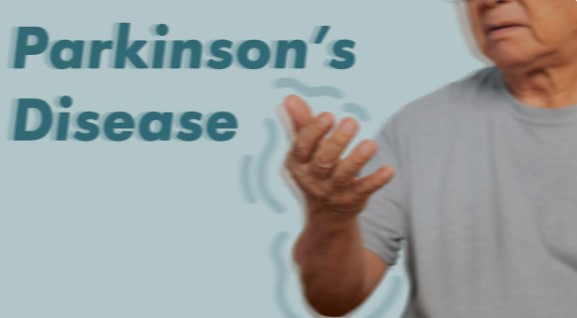Parkinson’s Disease: An Overview of Causes, Symptoms, and Management Options

Parkinson’s disease is a progressive neurological disorder that affects movement. It occurs when nerve cells in a part of the brain called the substantia nigra begin to deteriorate, reducing the production of dopamine—a chemical that helps control movement and coordination. As dopamine levels decrease, symptoms of Parkinson’s become more pronounced, impacting a person’s ability to control their movements and perform daily tasks.
Causes of Parkinson’s Disease
The exact cause of Parkinson’s disease is still unknown, but researchers believe it may be due to a combination of genetic and environmental factors:
- Genetics: Mutations in certain genes, like LRRK2 and PARK7, have been linked to Parkinson’s, especially in cases with a family history of the disease.
- Environmental factors: Exposure to certain pesticides, herbicides, or heavy metals may increase the risk of developing Parkinson’s. Additionally, head injuries have been associated with an increased risk of the disease.
- Age and gender: While Parkinson’s can affect people of any age, it is more common in older adults, typically starting around age 60 or older. Men are statistically more likely to develop Parkinson’s than women.
Symptoms of Parkinson’s Disease
The symptoms of Parkinson’s can vary from person to person but often progress gradually. The main symptoms include:
- Tremors: Shaking, often beginning in one hand or arm, is a classic symptom.
- Bradykinesia: Slowness of movement, making simple tasks take longer than usual.
- Muscle stiffness: Muscle rigidity can limit range of motion and lead to discomfort.
- Postural instability: Difficulty balancing and maintaining posture, increasing the risk of falls.
- Changes in speech and writing: Speech may become soft or monotone, and handwriting may become small and cramped.
Non-Motor Symptoms
Beyond movement-related symptoms, Parkinson’s can also cause non-motor symptoms, including:
- Mood disorders such as depression and anxiety
- Cognitive changes, including memory problems
- Sleep disturbances
- Loss of sense of smell (anosmia)
- Gastrointestinal issues, such as constipation
Diagnosis of Parkinson’s Disease
Diagnosing Parkinson’s disease can be challenging because there is no definitive test for it. A neurologist will typically make a diagnosis based on medical history, symptoms, and a physical and neurological examination. Imaging tests, like an MRI or PET scan, may be used to rule out other conditions but are not specifically used to diagnose Parkinson’s.
Treatment and Management Options
While there is currently no cure for Parkinson’s disease, treatments focus on managing symptoms and improving quality of life:
- Medication: The primary treatment for Parkinson’s is medication to increase or substitute dopamine. Common drugs include Levodopa, which the brain converts into dopamine, and dopamine agonists, which mimic dopamine effects.
- Deep brain stimulation (DBS): In advanced cases, DBS may be recommended. This surgical procedure involves implanting electrodes in the brain to stimulate areas that control movement, helping to reduce symptoms like tremors and rigidity.
- Physical and occupational therapy: Exercises can improve flexibility, strength, and balance, while occupational therapy helps individuals adapt to challenges with daily activities.
- Lifestyle modifications: Regular exercise, a balanced diet, and cognitive activities can also play a role in managing symptoms and slowing progression.
Living with Parkinson’s Disease
Parkinson’s disease can be challenging, both physically and emotionally. Support from family, friends, and healthcare providers is essential. Many people with Parkinson’s find it helpful to connect with support groups or seek mental health support to cope with the emotional aspects of the disease.
Research and Future Outlook
Research on Parkinson’s disease is ongoing, with promising areas including stem cell therapy, gene therapy, and new medications that may slow disease progression. Advances in understanding the disease offer hope for better treatments and, one day, a potential cure.
Conclusion
Parkinson’s disease is a complex condition, but with early diagnosis, effective treatment, and strong support, people with Parkinson’s can lead fulfilling lives. Ongoing research continues to provide hope for more effective therapies and a better understanding of the disease’s underlying causes.
